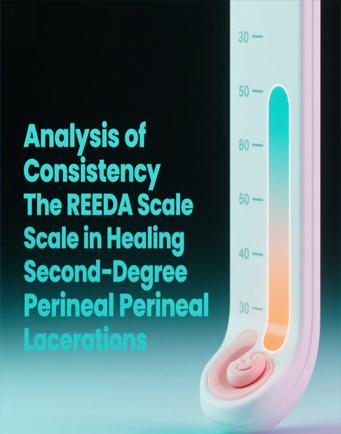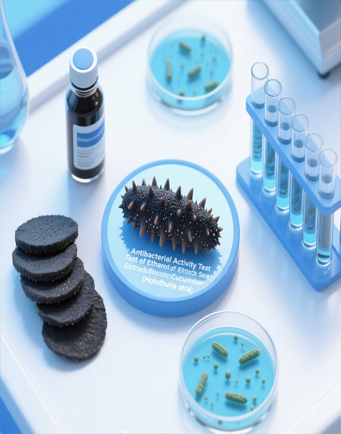The Effectiveness of Pineapple Extract (Ananas Comosus) and Kesum Leaves (Polygonus Minus) on the Quality of Coconut Oil (Coconus Nucifera)
Downloads
The processed oil from the coconut plant is generally understood as coconut oil. A method is required to produce a product with a higher oil extraction rate and is able to reduce the water content and free fatty acids in the coconut oil production. It is also necessary to add substances that can delay or prevent fat oxidation reactions by generating substances in the form of antioxidants. The method that can be implemented is the enzymatic method employing the bromelain enzyme in a pineapple with the addition of an antioxidants substance from the kesum leaf. The objective of this research is to describe the quality of coconut oil after the addition of pineapple (ananas comosus) and kesum leaves (polygonus minus) extracts. The parameters for describing the quality of the oil are the organoleptic test, the degree of acidity, the oil extract rate, the peroxide number, the saponification number, and the acid number. This research is a quasi-experiment. The samples in this research were coconut oil without the addition of pineapple fruit extract, coconut oil with the addition of pineapple fruit extract without the addition of kesum leaves, and coconut oil with the addition of pineapple fruit extract and kesum leaves as much as 20gr, 30gr and 40gr. Based on the statistical results of the linear regression test, it was discovered that p-value = 0.000 <0.05, so it was concluded that there was an effect of the addition of pineapple fruit and leaves of kesum on acid number content with an effect of 76.4% on the acid number, 71.4% on the peroxide number, and 81.5% to the saponification number. It is recommended to test the water content, free fatty acids, and iodine number.
Ahmad, R., Sahidin, I., Taher, M., Low, C., Noor, N. M., Sillapachaiyaporn, C., … Baharum, S. N. (2018). Polygonumins A, a newly isolated compound from the stem of Polygonum minus Huds with potential medicinal activities. Scientific Reports, 8(1), 1–15. doi: https://doi.org/10.1038/s41598-018-22485-5
Ariono, D., Christian, M., Irfan, P., Suharno, S. M., & Tamara, A. (2017). Pengaruh Penambahan Ekstrak Bahan Alami Terhadap Laju Oksidasi Minyak Kelapa. Reaktor, 17(13), 157–165. doi: https://doi.org/10.14710/reaktor.17.3.157-165
Azman, A. N., Sumarto, & Edison. (2018). Ekstraksi Dan Karakteristik Minyak Ikan Sembilang (Paraplotosus albilabris) Dengan Bahan Pelarut Yang Berbeda. Berkala Perikanan Terubuk, 46(1), 19–27.
Badan Standardisasi Nasional. (2013). SNI 3741. Jakarta: Badan Standarisasi Nasional.
Dewi, S., Asseggaf, S. N., & Natalia, D. (2019). Efek Ekstrak Etanol Daun Kesum (Polygonum minus Huds .) sebagai Antifungi terhadap Trichophyton rubrum. Jurnal Kesehatan Andalas, 8(2), 198–203. doi: https://doi.org/10.25077/jka.v8i2.992
Effendi, A. M., Winarni, & Sumarni, W. (2012). Optimalisasi Penggunaan Enzim Bromelin dari Sari Bonggol Nanas Dalam Pembuatan Minyak Kelapa. Indonesian Journal of Chemical Science, 1(1), 1–6.
Hernawati, D., & Jirana. (2018). Analisis Asam Lemak Bebas dan Kolesterol pada Minyak Kelapa Hasil Fermentasi. Saintifik, 4(2), 194–199. doi: https://doi.org/10.31605/saintifik.v4i2.215
Khoirunnisa, Z., Wardana, A. S., & Rauf, R. (2019). Angka Asam Dan Peroksida Minyak Jelantah Dari Penggorengan Lele Secara Berulang. Jurnal Kesehatan, 12(2), 81–90. doi: https://doi.org/10.23917/jk.v12i2.9764
Kurnianingsih, N. P., Maherawati, M., & Rahayuni, T. (2020). Traditional Coconut Oil Purification Using Activated Charcoal Coconut Shell Adsorbents. Agrisaintifika: Jurnal Ilmu-Ilmu Pertanian, 4(1), 37-45. doi: https://doi.org/10.32585/ags.v4i1.848
Lempang, I. R., Fatimawali, & Pelealu, N. C. (2016). Uji Kualitas Minyak Goreng Curah Dan Minyak Goreng Kemasan Di Manado. PHARMACON, 5(4), 155–161.
Mahmud, N. R. A., Muhammad, N., & Nurhalifah. (2021). Effect of the Adding of Natural Antioxidant in the Stored Traditional Coconut Oil on the Free Fatty Acid Value. Proc. Internat. Conf. Sci. Engin, 4(February), 76–79.
Male, K. S., Nuryanti, S., & Rahmawati, S. (2014). Ekstrak Enzim Protease Dari Daun Palado (Agave Angustifolia) Dan Pemanfaatannya Dalam Proses Pembuatan Virgin Coconut Oil. Jurnal Akademika Kimia, 3(3), 111–120.
Ngatemin, Nurrahman, & Isworo, J. T. (2013). Pengaruh Lama Fermentasi Pada Produksi Minyak Kelapa Murni (Virgin Coconut Oil) Terhadap Sifat Fisik, Kimia, dan Organik. Jurnal Pangan Dan Gizi, 4(2), 9–18.
Novitriani, K., & Sapitri, N. (2014). Efektivitas Air Perasan Buah Nanas (Ananas comocus) Pada Peningkatan Nilai Mutu Minyak Kelapa (Coconus nucifera). Jurnal Kesehatan Bakti Tunas Husada, 11(1), 24–29. doi: http://dx.doi.org/10.36465/jkbth.v11i1.41
Palilingan, S., & Pungus, M. (2018). Produksi Enzimatis Virgin Coconut Oil ( VCO ) Dengan Enzim Bromelin Serta Pemurniannya Menggunakan Adsorben Zeolit. Fullerene Journal of Chemistry, 3(2), 70–74. doi: https://doi.org/10.37033/fjc.v3i2.41
Prihanani, P., Sagala, D., & Yonadi, Y. (2013). Studi Pembuatan Minyak Kelapa Murni secara Enzimatis dengan Menggunakan Berbagai Tingkat Konsentrasi Enzim Nanas pada Dua Jenis Kelapa. Jurnal Agroqua, 11(1), 24–28. doi: https://doi.org/10.32663/ja.v11i1.42
Purwaningsih, D. Y., Zuchrilah, D. R., & Nurmala, I. (2019). Peningkatkan Mutu Minyak Goreng Curah dengan Penambahan Ekstrak Kulit Pisang Raja Sebagai Antioksidan Alami. Reka Buana, 4(1), 22–29. doi: http://dx.doi.org/10.33366/rekabuana.v4i1.1058
Ratnawaty, G. J., & Indrawati, R. (2021). The Effectiveness of Kesum Leaves (Polygonum Minus) In Reducing of Free Fatty Acids In Used Cooking Oil. INTEK: Jurnal Penelitian, 7(2), 167-170. doi: http://dx.doi.org/10.31963/intek.v7i2.2715.
Tomagola, N., Muthiawati, N., Wiyani, L., & Jaya, F. (2016). Aktivitas Antioksidan Ekstrak Kayu Manis (Cinnamomum burmanii) Untuk Mengatasi Ketengikan (Rancidity) Pada Minyak Goreng. Chemical Process Engineering, 1(2), 7–15. doi: https://doi.org/10.33536/jcpe.v1i2.65
Wahyusi, K. N., V. P. R. W., & Perdana, D. (2020). Making Virgin Coconut Oil (VCO) with Fermentation Process Using Fermipan and Addition of Pineapple Extract. NST Proceedings, 2020 (1st International Conference Eco-Innovation in Science, Engineering, and Technology), 238–242. doi: https://doi.org/10.11594/nstp.2020.0538
Copyright (c) 2021 JURNAL INFO KESEHATAN

This work is licensed under a Creative Commons Attribution-NonCommercial-ShareAlike 4.0 International License.
Copyright notice
Ownership of copyright
The copyright in this website and the material on this website (including without limitation the text, computer code, artwork, photographs, images, music, audio material, video material and audio-visual material on this website) is owned by JURNAL INFO KESEHATAN and its licensors.
Copyright license
JURNAL INFO KESEHATAN grants to you a worldwide non-exclusive royalty-free revocable license to:
- view this website and the material on this website on a computer or mobile device via a web browser;
- copy and store this website and the material on this website in your web browser cache memory; and
- print pages from this website for your use.
- All articles published by JURNAL INFO KESEHATAN are licensed under the Creative Commons Attribution 4.0 International License. This permits anyone to copy, redistribute, remix, transmit and adapt the work provided the original work and source is appropriately cited.
JURNAL INFO KESEHATAN does not grant you any other rights in relation to this website or the material on this website. In other words, all other rights are reserved.
For the avoidance of doubt, you must not adapt, edit, change, transform, publish, republish, distribute, redistribute, broadcast, rebroadcast or show or play in public this website or the material on this website (in any form or media) without appropriately and conspicuously citing the original work and source or JURNAL INFO KESEHATAN prior written permission.
Permissions
You may request permission to use the copyright materials on this website by writing to jurnalinfokesehatan@gmail.com.
Enforcement of copyright
JURNAL INFO KESEHATAN takes the protection of its copyright very seriously.
If JURNAL INFO KESEHATAN discovers that you have used its copyright materials in contravention of the license above, JURNAL INFO KESEHATAN may bring legal proceedings against you seeking monetary damages and an injunction to stop you using those materials. You could also be ordered to pay legal costs.
If you become aware of any use of JURNAL INFO KESEHATAN copyright materials that contravenes or may contravene the license above, please report this by email to jurnalinfokesehatan@gmail.com
Infringing material
If you become aware of any material on the website that you believe infringes your or any other person's copyright, please report this by email to jurnalinfokesehatan@gmail.com.





































